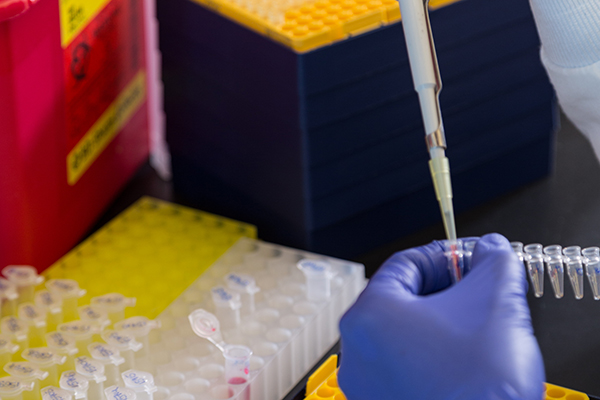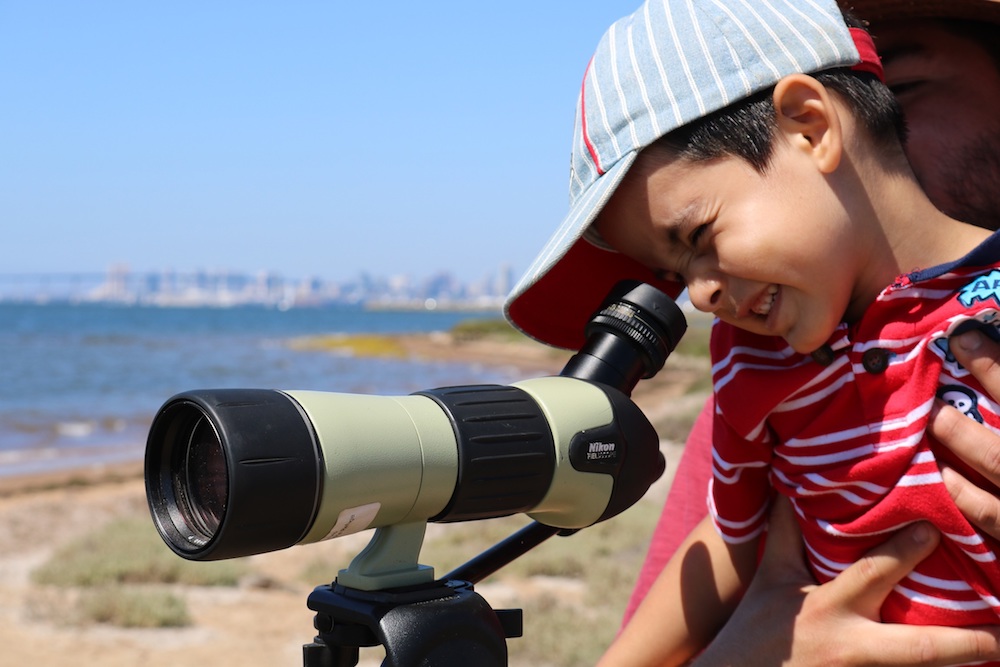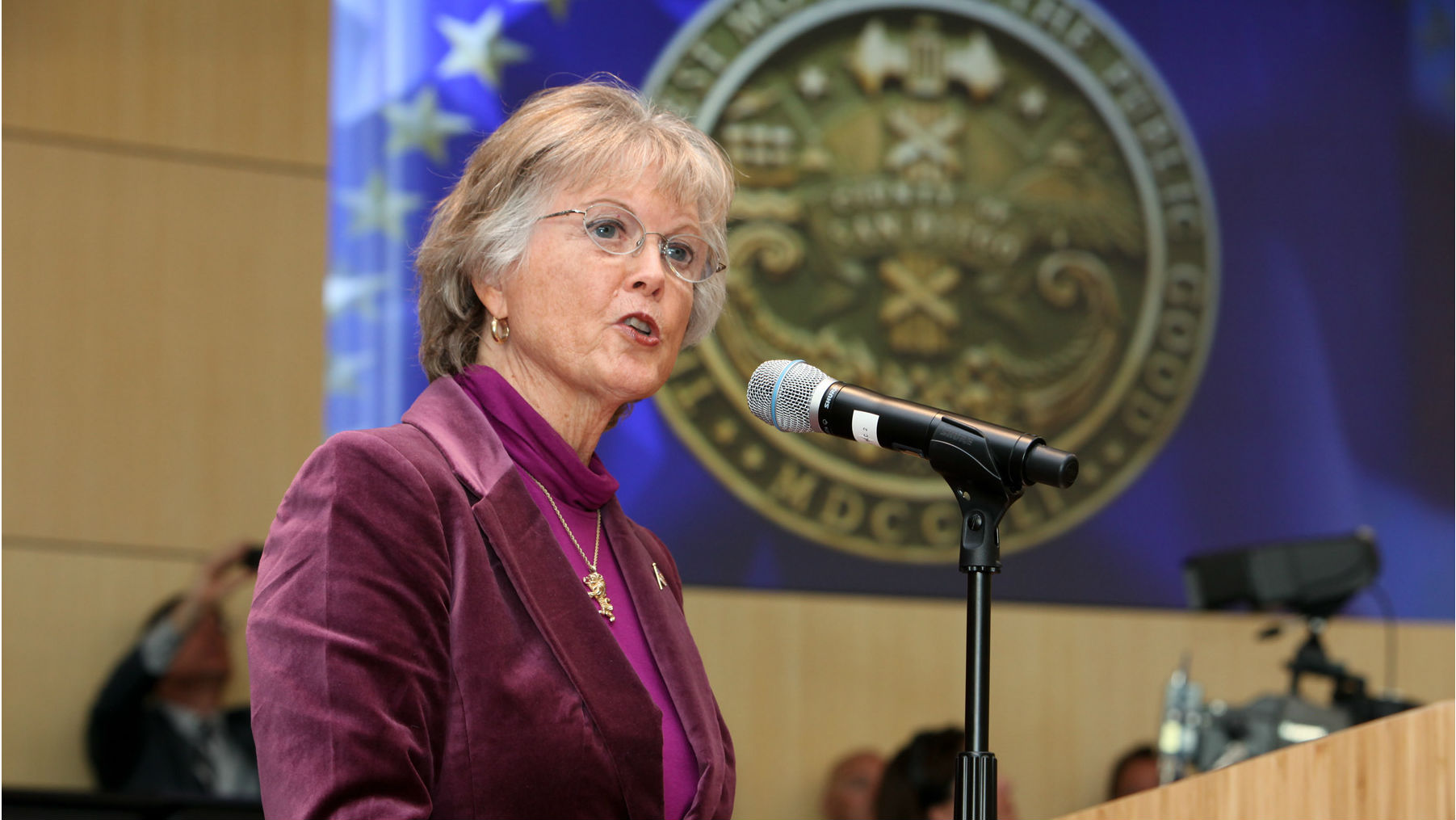Daily Business Report-Oct. 5, 2018
Voice of San Diego Editor in Chief Scott Lewis, center, moderates between panelists Gordon Carrier, principal architect of Carrier Johnson + Culture, left, and SoccerCity Project Manager Nick Stone, right.
Panelists present competing plans for
developing Mission Valley stadium site
at NAIOP San Diego breakfast event
By Jennifer Whitelaw
As San Diego voters face a big decision about the direction of the SDCCU Stadium site in Mission Valley this November, NAIOP San Diego convened a panel discussion, moderated by Voice of San Diego’s Scott Lewis, to help its members and guests understand the two visions presented by SoccerCity and San Diego State University.
Perspectives differed, as SoccerCity (Measure E on the ballot) was presented by SoccerCity Project Manager Nick Stone, while the SDSU West plan (Measure D on the ballot) was presented by SDSU’s architectural consultant for the project, Gordon Carrier, principal architect of Carrier Johnson + Culture.
Open space
According to Stone, the SoccerCity plan includes privately funding 60 acres of park space—committing $40 million to create a park that SoccerCity would maintain for 99 years.
Carrier told the audience the SDSU plan focuses first on resolving the site’s floodplain issues by creating upper and lower plains. Open space accounts for 52 percent of SDSU’s proposal, including 89-acres of park space. A proposed River Park would be owned by the City of San Diego but developed by SDSU with public input. SDSU’s plan also commits to a full California Environmental Quality Act (CEQA) review.
Housing
Both plans include affordable housing units, as per San Diego’s inclusionary housing plan. SoccerCity proposes 4,800 units of total housing. SDSU proposes building 4,600 units but anticipates much of the housing it develops to be occupied by SDSU faculty, staff and students.
Retail
Planned retail space represents one of the biggest divides between the two plans. SDSU expects to develop 95,000 square feet of retail space, whereas SoccerCity projects 700,000 square feet. SDSU maintains that 95,000-square-feet of retail space is more than enough to support the projected population and accounts for less projected car trips than would be incurred by the SoccerCity plan.
SoccerCity’s robust retail space would provide a strong tax base for San Diego, Stone said.
Office/Other Space
The SoccerCity plan includes 2.4 million square feet of office space. SDSU splits its remaining commercial space between 1.6 million square feet of office, research and educational space in a mix of private and public uses. It also includes a planned hotel and conference center that would be integrated with SDSU’s hospitality management degree program. Stone reminded the audience that the SoccerCity plan also sets aside 35 acres of expansion space for SDSU’s use.
Stadium
Currently, the stadium costs the City of San Diego $12 million annually to operate and maintain, with SDSU paying less than $1 million for playing its football games there.
Stone outlined SoccerCity’s vision of a new joint-use stadium for soccer and football that would feature games of the Major League Soccer team it plans to attract, with a sports and entertainment district surrounding it. If a team cannot be secured, the site will never transfer to SoccerCity. SDSU’s plan includes a financially self-sustaining, 35,000-seat stadium for football, soccer and concerts with the ability to expand it at either end to meet Major League Football requirements.
Financials
Stone said the SoccerCity plan would amount to $150 million of savings for the San Diego. SoccerCity would ultimately pay $83 million—a sum he described as fair market value—for the site, purchasing up to 79 acres. Initially, however, the group would lease the site. He estimated $2.8 billion in fiscal impact from SoccerCity and 26,000 jobs created.
Carrier presented primarily from a design point of view, not as a financial representative, but he maintained that neither SDSU students nor taxpayers would finance SDSU West. He referenced SDSU’s 150 years of history, as well as the university’s $5.6 billion annual influence on San Diego and $457 million of state tax generated.
___________________

California’s test scores are so stagnant, it could
take a generation to close the achievement
By Richard Cano | CALmatters
For the second year in a row, California students’ test scores have inched up so slowly that, by some estimates, it could take a generation for disadvantaged students to close the achievement gap with their peers.
That was the sobering assessment on Tuesday as the California Department of Education released the 2018 results of the state’s new, more rigorous system of standardized testing.
State education officials emphasized that at least the metrics are moving in the right direction. But all acknowledged that, four years after new standardized tests debuted to measure a sweeping overhaul of K-12 education, the numbers remain virtually stalled after an initial bump in scores on the first year after baseline tests were taken statewide.
Despite small overall improvements in reading and math for the 3 million-plus public school students in grades 3-8 and 11 who were tested, progress is moving at a snail’s pace, with stark disparities in passing rates between white and Asian American students and their Latino, black and disadvantaged classmates. At the state’s largest school district, Los Angeles Unified, poor students passed the math and reading exams at less than half the rate of students who were classified as not economically disadvantaged.
“California cannot fail this generation of students and risk furthering the divide between the haves, and have nots,” said Ted Lempert, president of Children Now, a nonprofit, nonpartisan advocacy group based in Oakland. “We must close gaps between vulnerable student populations and their peers.”
The proportion of California students meeting or exceeding the state’s learning standards in the English language exam edged up by just 1.3 percentage points to a hair shy of the 50 percent mark. Meanwhile, only about 39 percent of students tested passed the math portion of the computer-based exam known as the “Smarter Balanced” assessment. That increase, too, was barely more than one point.
_____________________
Cubic, UK minister and Rep. Peters
celebrate successful partnership
Cubic Transportation Systems executives will be meeting with U.S. Rep. Scott Peters (D-CA) and U.K. Minister for Investment Graham Stuart to celebrate and further enhance collaboration and economic growth for San Diego and the U.K.
Since the Transport for London (TfL) technology partnership agreement in 2016, Cubic has been awarded major contracts to deliver next-generation fare payment systems for Miami, New York, Boston, Brisbane and the Bay Area. Cubic also won a contract to provide Sydney with the world’s most advanced transport management system based on Cubic’s Transport Management Platform which was developed in the U.K.
The New York, Boston, Brisbane, Sydney and Bay Area contracts total over $2 billion of work for Cubic and will create jobs in Cubic’s Stockton-on-Tees and London offices in the U.K. as well as San Diego. In addition, Cubic is working with the city of San Diego to upgrade its San Diego headquarter facilities with a new campus to accommodate the company’s growth. This facility upgrade project is anticipated for completion in 2021.
_____________________

‘Double agent’ in the immune system may
make us vulnerable to bacterial infections
Scientists at Scripps Research have discovered the role of an immune system double agent. This molecule, called USP18, can help curtail immune responses, but it can also open the door to bacterial infections, such as harmful listeria and staph infections.
“I call the molecule a ‘wolf in sheep’s clothing,’ ” says Namir Shaabani, a postdoctoral researcher at Scripps Research and co-first author of the recent Science Immunology study.
The researchers found that deleting the specific gene for this protein in certain immune system cells helps the body fight bacterial infections. This work, conducted in mouse models, offers a potential antimicrobial approach that could target both bacteria and viruses.
It all comes down to type 1 interferons, a type of immune molecule produced at the start of a viral infection. Interferons fight off the virus, and then their levels should drop when the threat is gone.
_____________________

Living Coast Discovery Center receives
$89,150 grant from U.S. Fish & Wildlife Service

The Living Coast Discovery Center, a nonprofit zoo and aquarium on San Diego Bay in Chula Vista, has received an $89,150 grant from the U.S. Fish & Wildlife Service as part of the SoCal Urban Wildlife Refuge Project.
The grant will enable the Living Coast to connect urban youth with nature and wildlife through a variety of programs, including field trips, teacher trainings, and refuge-based activities at the Sweetwater Marsh Unit of the San Diego Bay National Wildlife Refuge.
Students in grades three through 12 will be able to participate in the Refuge Living Lab, an interactive field trip led by a trained Living Coast educator that focuses on the importance of wildlife refuges and environmental conservation. Students will participate in a variety of experiential learning activities, including the planting of native vegetation, animal encounters, scientific experiments and trail hikes on the refuge.
The grant allows students from local underserved and Title 1 schools to participate in these standards-based programs at no cost. This is the fourth year that the Living Coast will offer its Refuge Living Lab field trips thanks to the SoCal Urban Wildlife Refuge Project.
_____________________
Illumina board director shares
Noble Prize in chemistry
San Diego Union-Tribune
Frances Arnold, a Caltech professor who serves on the board of directors of Illumina, the influential San Diego life sciences company, has been chosen to share this year’s Nobel Prize in chemistry. Arnold, who joined the Illumina board in 2016, is sharing the prize with American George P. Smith and Briton Sir Gregory P. Winter. Collectively, they exploited Darwinian evolution to improve the efficiency of molecules used in designing drugs and developing biofuels.
_____________________
San Diego International Film
Festival returns Oct. 10-14
The San Diego International Film Festival returns for the 17th year on Oct. 10-14, with a lineup filled with events and film screenings. Produced by the San Diego Film Foundation, the five-day event will feature 100+ independent films, studio premieres, panels with celebrities and industry insiders, red carpet events, parties, all-star tributes and filmmaker awards.
For more information on this year’s San Diego International Film Festival and to purchase tickets, visit sdfilmfest.com.
Voice of San Diego Editor in Chief Scott Lewis, center, moderates panelists Gordon Carrier, principal architect of Carrier Johnson + Culture, left, and SoccerCity Project Manager Nick Stone, right.



